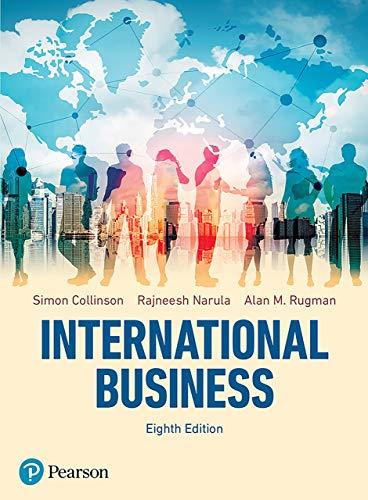Question:
Pan-Europa Foods, headquartered in Brussels, Belgium, was a multinational producer of high-quality ice cream, yogurt, bottled water, and fruit juices. Its products were sold throughout Scandinavia, Britain, Belgium, the Netherlands, Luxembourg, western Germany, and northern France. (See Exhibit 1 for a map of the company's marketing region.) The company was founded in 1924 by Theo Verdin, a Belgian farmer, as an offshoot of his dairy business. Through keen attention to product development, and shrewd marketing, the business grew steadily over the years. The company went public in 1979 and by 1993 was listed for trading on the London, Frankfurt, and Brussels exchanges. In 1992, Pan-Europa had sales of almost EUR 1.1 billion. Ice cream accounted for 60 percent of the company's revenues; yogurt, which was introduced in 1982, contributed about 20 percent. The remaining 20 percent of sales was divided equally between bottled water and fruit juices. Pan-Europa's flagship brand name was "Rolly," which was represented by a fat, dancing bear in farmers' clothing. Ice cream, the company's leading product, had a loyal base of customers who sought out its high butterfat content, large chunks of chocolate, fruit, nuts, and wide range of original flavors. Pan-Europa sales had been static since 1990 (see Exhibit 2), which management attributed to low population growth in northern Europe and market saturation in some areas. Outside observers, however, faulted recent failures in new product introductions. Most members of management wanted to expand the company's market presence and introduce more new products to boost sales. These managers hoped that increased market presence and sales would improve the company's market value. Pan-Europa's stock was currently at eight times earnings, just below book value. This price/earnings ratio was below the trading multiples of comparable companies, but it gave little value to the company's brands. CASE 89 efficiency improvements, preventive maintenance, safety, and pollution control. The Company Pan-Europa Foods, headquartered in Brussels, Belgium, was a multinational producer of high-quality ice cream, yogurt, bottled water, and fruit juices. Its products were sold throughout Scandinavia, Britain, Belgium, the Netherlands, Luxembourg, western Germany, and northern France. (See Exhibit 1 for a map of the company's marketing region.) The company was founded in 1924 by Theo Verdin, a Belgian farmer, as an offshoot of his dairy business. Through keen attention to product development, and shrewd marketing, the business grew steadily over the years.
1. Strategically, what must Pan-Europa do to keep from becoming the victim of a hostile takeover? What rows/categories in Exhibit 2 will thus become critically important this coming year? What should Pan-Europa do now that they have won the price war?
2. Using IRR, conduct a straight financial analysis of the investment alternatives, and rank the projects.
3. Using the Type of Project (New Product or new markets, etc.) to group like projects as listed in the table on p71, set up un-weighted 0-1 factor scoring model (i.e., Yes/No) using the criteria of Minimum Acceptable IRR and Maximum Acceptable Payback Years.
4. Using NPV at Minimum ROR, conduct a straight financial analysis of the investment alternatives and rank the projects. Using these rankings, now select the projects to invest in still using the analysis from question #3?
5. The above scoring models do not adequately rank and analyze the Effluent Waste Water Treatment at Four Plants project. Suggest a way evaluate the effluent project.
6. Now that you have seen several ways to analyze and select projects, develop a model to rank all of the projects using least one numeric scoring criteria from the above (IRR, NPV, and Minimum ROR), as well as is the project "Strategically Align to the Company" and "Level of Risk". For example, "New Product Development" is riskier than a "Product Extension". Moreover, if the project is not aligned to the company's core competencies, than that project is a high risk







